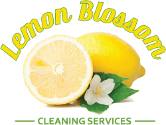Our outdoor spaces, whether it’s a serene garden, a cozy patio, or a welcoming deck, play a vital role in our lives. They provide a sanctuary for relaxation, entertainment, and connection with nature. However, over time, these areas can accumulate dirt, grime, and wear, losing their appeal and functionality. That’s why it’s crucial to embark on the art of outdoor cleaning and revitalize these spaces to their former glory.
Your outdoor space is an extension of your home, and neglecting its maintenance can hinder your enjoyment of it.
The art of outdoor cleaning is a meticulous process that goes beyond a simple tidying up. It requires a comprehensive assessment of your outdoor areas, an understanding of proper techniques, and the use of suitable products to breathe new life into your space. In this article, our aim is to provide guidance to homeowners who are passionate about deep cleaning and maintaining their outdoor spaces, encompassing various areas like patios, decks, and gardens. By sharing expert advice, effective techniques, and product recommendations, we hope to assist you in revitalizing your outdoor areas, transforming them into havens of relaxation and sources of entertainment.
Assessing Your Outdoor Space
Before embarking on the exciting journey of outdoor cleaning, it is crucial to pause and assess your outdoor area. This moment of evaluation allows you to gain a comprehensive understanding of the current condition of your space and identify areas that require attention. By taking the time to carefully observe and evaluate your surroundings, you will be better equipped to set specific goals for the revitalization process and plan accordingly.
Begin your assessment by leisurely walking around your outdoor area, paying close attention to every detail. Observe the condition of your patio, meticulously examining the surface for any cracks or signs of wear. These imperfections may have developed over time due to weather exposure or heavy use. Make note of any loose boards on your deck that may pose a safety risk or diminish the overall aesthetic appeal. The presence of loose boards could indicate the need for repairs or replacements to ensure the structural integrity of the deck.
As you continue your assessment, shift your focus to the garden.
Observe the growth of plants, flowers, and shrubs, noting any areas where overgrown vegetation may be encroaching on other elements of your outdoor space. Weed growth can not only disrupt the visual harmony of your garden but also hinder the growth and health of desired plants. Take note of any weeds or invasive species that require immediate attention.
In addition to visual cues, pay attention to any other signs of damage or wear.
Notice if there are any structural issues with your outdoor furniture, such as wobbly chairs or a shaky table. These can be indicators that repairs or replacements are necessary to ensure the longevity and functionality of your furniture. Additionally, observe the condition of any decorative elements or accessories you have incorporated into your outdoor space, such as lighting fixtures or decorative pots. If any of these elements appear damaged or weathered, they may require refurbishment or replacement.
As you conduct your assessment, compile a list of the areas that require attention.
Create a detailed inventory of the specific issues you have identified, categorizing them based on priority. For example, you may prioritize repairing a crack in the patio surface over trimming an overgrown shrub. By setting priorities and goals, you can effectively plan your revitalization process, allocating time and resources accordingly.
Remember that the assessment phase is essential for providing clarity and direction as you embark on your outdoor cleaning journey. By identifying areas of concern and setting specific goals, you will be able to approach the cleaning and revitalization process with purpose and intention. This initial investment of time and attention will pay dividends as you witness the transformation of your outdoor space into a beautifully revitalized area that brings joy and inspiration.
Preparing for Outdoor Cleaning
To guarantee a seamless cleaning process, it is essential to gather all the necessary tools and supplies in advance. The specific areas you intend to target will determine the tools required, so consider the following items as you prepare for your outdoor cleaning endeavor: a power washer, scrub brushes, cleaning solutions, safety goggles, gloves, and protective clothing.
A power washer can be a valuable asset when tackling tough stains or deeply embedded dirt on surfaces such as patios, decks, or driveways. Its high-pressure water stream is designed to remove grime effectively. Additionally, scrub brushes of varying sizes and bristle types will aid in loosening and removing stubborn dirt and stains from different surfaces.
Choosing suitable cleaning solutions is crucial to achieving optimal results.
Depending on the specific surfaces you’re cleaning, you may need different types of cleaning solutions. For instance, a mild detergent mixed with water can be effective for general cleaning purposes. However, for more stubborn stains or specialized surfaces, you might require specific cleaning products designed for those materials. Take the time to research and select the appropriate cleaning solutions to ensure they are safe for both the environment and the surfaces you’re cleaning.
Safety should always be a priority during any cleaning process.
Before you commence your outdoor cleaning activities, carefully inspect the area for potential hazards. Remove any furniture, decorations, or obstacles that could impede your progress or pose a safety risk. By creating a clear and clutter-free space, you provide yourself with the freedom to move around safely and perform the necessary cleaning tasks.
Moreover, protect yourself by wearing safety goggles to shield your eyes from debris, chemicals, or water splashes. Gloves will safeguard your hands and provide a better grip on tools and surfaces. Additionally, consider wearing appropriate protective clothing, such as long sleeves and pants, to shield your skin from scratches, chemical splashes, or sun exposure.
By gathering the required tools and supplies beforehand, you eliminate the need for interruptions during the cleaning process.
This allows you to maintain your focus and achieve efficient and effective results. Proper preparation not only saves you time and effort but also contributes to a safer and more enjoyable outdoor cleaning experience.
Cleaning and Revitalizing Patios and Decks
Over time, the surfaces of patios and decks are exposed to the elements and can accumulate dirt, stains, and even mold. To restore their beauty and functionality, a systematic cleaning process is essential. Here’s a step-by-step guide to help you rejuvenate your patio and deck surfaces effectively:
- Start by removing any loose debris and dirt. Use a broom or leaf blower to sweep away leaves, branches, and other debris that may have accumulated on the surface. This initial cleaning step will make the subsequent deep cleaning more effective.
- Once the loose debris is cleared, it’s time to employ power washing techniques. A power washer, with its high-pressure water stream, is an excellent tool for deep cleaning outdoor surfaces. Follow the manufacturer’s instructions and adjust the pressure settings accordingly. Begin by applying water to the surface, thoroughly wetting it before moving on to the next step.
- When using the power washer, work in sections, starting from one end and gradually moving to the other. Keep the nozzle at a safe distance from the surface to avoid causing any damage. Hold the nozzle at a slight angle to the surface and move it in a sweeping motion. This will help remove embedded dirt, stains, and mold effectively.
- Pay special attention to areas with stubborn stains. For particularly difficult stains, you may need to apply a mild detergent or a specialized cleaning solution. Ensure the cleaning solution is suitable for the specific surface you are working on, and follow the manufacturer’s instructions for proper use.
- For wooden decks, it is crucial to go beyond the cleaning process and take steps to protect the wood from moisture and prolong its lifespan. Consider treating the deck with a suitable wood treatment product that helps prevent moisture absorption and provides protection against rot and decay. After treating, apply a sealer to create a barrier that shields the wood from the elements. Regularly reapply the sealer as recommended by the manufacturer to maintain its effectiveness.
- While cleaning, take the opportunity to inspect the deck or patio for any signs of damage or wear. Look for loose boards, rusted nails, or other structural issues. Replace any damaged or rotten wood promptly and secure loose boards to ensure the safety and longevity of your outdoor space.
Sprucing Up the Garden
A garden bursting with vibrancy and meticulous maintenance can truly transform any outdoor space into a breathtaking haven. To achieve such a remarkable garden, follow these essential steps:
- Begin by clearing weeds and overgrown vegetation that may be encroaching upon your desired plants. Weeds not only detract from the visual appeal of your garden but also compete with your plants for essential nutrients and water. Gently remove them, ensuring to extract their roots to prevent regrowth.
- Next, take the time to trim and shape your plants, hedges, and shrubs. Pruning helps maintain a tidy and organized appearance, allowing your garden’s natural beauty to shine. Use appropriate gardening tools, such as shears or pruning scissors, to carefully remove dead or overgrown branches, ensuring a clean and well-maintained aesthetic.
- Enhance the health and fertility of your garden’s soil by incorporating fresh mulch and compost. Mulch acts as a protective layer, helping to retain moisture, regulate temperature, and suppress weed growth. Apply a layer of mulch around your plants, being mindful not to pile it against the plant stems, which can lead to moisture-related issues. Compost, rich in nutrients, promotes healthy plant growth and soil fertility. Integrate compost into the soil, particularly in areas where plants are thriving, to replenish essential nutrients.
- Elevate the visual allure of your garden by incorporating colorful flowers or captivating decorative elements. Select flowers that bloom in different seasons to ensure a year-round display of color. Consider the varying heights, textures, and colors of the flowers to create visual interest and balance within your garden. Additionally, explore decorative elements such as sculptures, bird feeders, or strategically placed garden ornaments to add an artistic touch and create eye-catching focal points.
Enhancing Outdoor Furniture
Outdoor furniture, a key element of any outdoor space, is subject to the rigors of the elements, which can result in wear and tear over time. To maintain the longevity and appeal of your outdoor furniture, it’s important to follow these essential steps:
- Begin by cleaning your outdoor furniture based on its specific material. Different materials require different cleaning methods. For wooden furniture, use a mild detergent mixed with water to gently remove dirt and grime. Be cautious not to use excessive water, as it can lead to wood damage. For metal furniture, wipe it down with a cloth dampened with a solution of mild soap and water. Plastic furniture can be cleaned using a mixture of water and mild detergent or a specialized plastic cleaner. Ensure you thoroughly rinse and dry the furniture after cleaning to prevent any residual moisture.
- After cleaning, consider applying appropriate treatments or coatings to protect your outdoor furniture from weather damage and preserve its appearance. For wooden furniture, applying a wood preservative or sealant can help safeguard it from moisture, UV rays, and insect infestation. Metal furniture may benefit from a rust-resistant coating or a protective spray to prevent corrosion. Plastic furniture typically does not require additional treatments, as it is naturally resistant to weathering. However, inspect it regularly for any signs of damage and address them promptly.
- If the cushions or fabric of your outdoor furniture have seen better days, it’s essential to repair or replace them to ensure optimal comfort and aesthetic appeal. Inspect the cushions for any signs of wear, such as fading, tearing, or loss of resilience. If they can be salvaged, consider cleaning them according to the manufacturer’s instructions. If replacement is necessary, explore options that are specifically designed for outdoor use, as they are typically resistant to water, UV rays, and mildew. When choosing new cushions or fabric, select colors and patterns that complement your outdoor space, adding a touch of style and personalization.
Maintaining Outdoor Structures
Fences, gates, pathways, and lighting fixtures contribute to the overall look and functionality of your outdoor space. Regularly inspect fences and gates for any signs of damage and repair them promptly. Clean and reseal pavers or concrete pathways to maintain their appearance and prevent weed growth. Check lighting fixtures, replace bulbs if necessary, and ensure they are functioning properly for safety and ambiance.
Choosing the Right Cleaning Products
When it comes to outdoor cleaning, it’s important to remember that not all cleaning products are created equal, as different surfaces have distinct needs. Understanding the specific requirements of materials such as wood, concrete, or metal is crucial in selecting the most appropriate cleaning products. By using environmentally friendly and safe solutions, you can ensure the well-being of your plants and pets. Seeking recommendations from professionals or reputable sources will further guarantee effective cleaning without causing any damage.
Wood, a popular material for outdoor structures and furniture, requires gentle cleaning to avoid damage.
Avoid harsh chemicals or abrasive cleaners that can strip away the protective finishes or harm the natural beauty of the wood. Instead, opt for mild detergents specifically formulated for wood surfaces. Mix the detergent with water and apply it using a soft brush or sponge, working in the direction of the wood grain. Rinse thoroughly and allow the wood to dry completely before applying any treatments or sealants.
Concrete, often found in outdoor pathways or patios, can accumulate dirt, stains, and mildew over time.
For routine cleaning, a mixture of water and mild detergent should suffice. Use a scrub brush or a broom with stiff bristles to scrub the surface, paying attention to any stubborn stains. If you encounter mold or mildew, a solution of water and bleach can be effective. Be cautious when using bleach and ensure proper ventilation. Rinse the concrete thoroughly after cleaning to remove any residue.
Metal, including aluminum or wrought iron furniture, can develop rust or lose its luster due to exposure to the elements.
When cleaning metal surfaces, avoid abrasive cleaners or steel wool that can scratch the finish. Instead, use a mild detergent mixed with water and a soft cloth or sponge. Gently scrub the surface, removing dirt and grime. For stubborn rust spots, use a rust remover specifically designed for metal surfaces. Rinse thoroughly and dry the metal to prevent the formation of new rust.
To protect your plants, pets, and the environment, opt for environmentally friendly and safe cleaning solutions.
Many eco-friendly products are available on the market, formulated with natural ingredients that are gentle yet effective. These products are free from harsh chemicals and toxins that could harm your plants or pose a risk to your beloved pets.
When in doubt, seek recommendations from professionals or reputable sources.
Consult with experts in the field of outdoor cleaning or rely on reputable websites, blogs, or publications that provide guidance on proper cleaning methods and product recommendations. This will ensure that you are using effective cleaning solutions that are specifically tailored to the needs of your outdoor surfaces.
Safety Precautions for Outdoor Cleaning
Safety should always be a top priority when engaging in outdoor cleaning activities. By taking the necessary precautions, you can ensure a secure and accident-free environment. Here are essential safety measures to follow:
- Wear appropriate protective gear: When undertaking outdoor cleaning tasks, it’s crucial to protect yourself from potential hazards. Wear safety goggles to shield your eyes from debris or splashes from cleaning solutions. Gloves will provide protection for your hands and minimize the risk of injuries. Sturdy shoes with slip-resistant soles are essential to maintain a firm footing, especially when working on wet surfaces.
- Handle chemicals responsibly: Many outdoor cleaning activities involve the use of cleaning solutions or chemicals. It’s imperative to handle these substances responsibly. Read and follow the instructions on the packaging carefully. Use them in well-ventilated areas to avoid inhalation of fumes. If using concentrated chemicals, always dilute them according to the recommended ratios. Store chemicals securely, out of reach of children and pets, and dispose of them properly in accordance with local regulations.
- Be aware of electrical hazards: Outdoor spaces often have electrical installations such as power lines, outdoor lighting connections, or electrical outlets. It’s essential to be mindful of these potential electrical hazards. Before starting any cleaning tasks, familiarize yourself with the location of these installations and take necessary precautions to avoid accidents. Keep cleaning equipment away from electrical outlets and ensure they are not exposed to water or other liquids. If you suspect any electrical issues, such as damaged wires or faulty connections, consult a qualified electrician before proceeding.
- Use caution on elevated surfaces: When cleaning elevated surfaces such as roofs, balconies, or high decks, exercise caution to prevent falls or injuries. Ensure that ladders or other means of access are stable and secure before climbing. Use appropriate safety harnesses or fall protection equipment if required. Avoid working on elevated surfaces during adverse weather conditions such as strong winds or heavy rain.
- Stay hydrated and take breaks: Outdoor cleaning can be physically demanding, especially during hot weather. It’s essential to stay hydrated by drinking plenty of water throughout the cleaning process. Take regular breaks to rest and avoid overexertion. Listen to your body and recognize signs of fatigue or heat-related illness. Seek shade or an air-conditioned space if necessary.
By following these safety guidelines, you can minimize the risk of accidents or injuries during outdoor cleaning. Prioritizing safety ensures a secure environment for both yourself and those around you. Remember, a well-executed cleaning process is one that is carried out responsibly, protecting your well-being and allowing you to enjoy the transformation of your outdoor spaces.
Regular Maintenance and Cleaning Schedule
To keep your outdoor space looking its best, establish a regular maintenance and cleaning schedule. Consider the specific needs of your outdoor area, such as seasonal changes or weather conditions, and create a routine accordingly. By implementing preventative measures and addressing maintenance tasks promptly, you can minimize future cleaning efforts and ensure a consistently inviting outdoor space.
Bringing It All Together: Creating a Relaxing Outdoor Space
The culmination of the art of outdoor cleaning lies in the creation of a relaxing and inviting space. Arrange furniture and accessories strategically to optimize comfort and flow. Incorporate plants, lighting, and decorative elements to enhance the atmosphere and create a personalized touch. By curating a space that reflects your style and preferences, you’ll have an outdoor area that beckons you to unwind and entertain.
In Conclusion…
Revitalizing your outdoor spaces through the art of outdoor cleaning allows you to fully enjoy and appreciate the beauty and tranquility of your own backyard. By following our advice, employing proper techniques, and utilizing suitable products, you can transform your outdoor areas into stunning retreats. Embrace the joy of outdoor living by maintaining a regular cleaning schedule and implementing ongoing maintenance practices. With a little effort and dedication, your outdoor space will become a haven of relaxation and a source of cherished memories.







